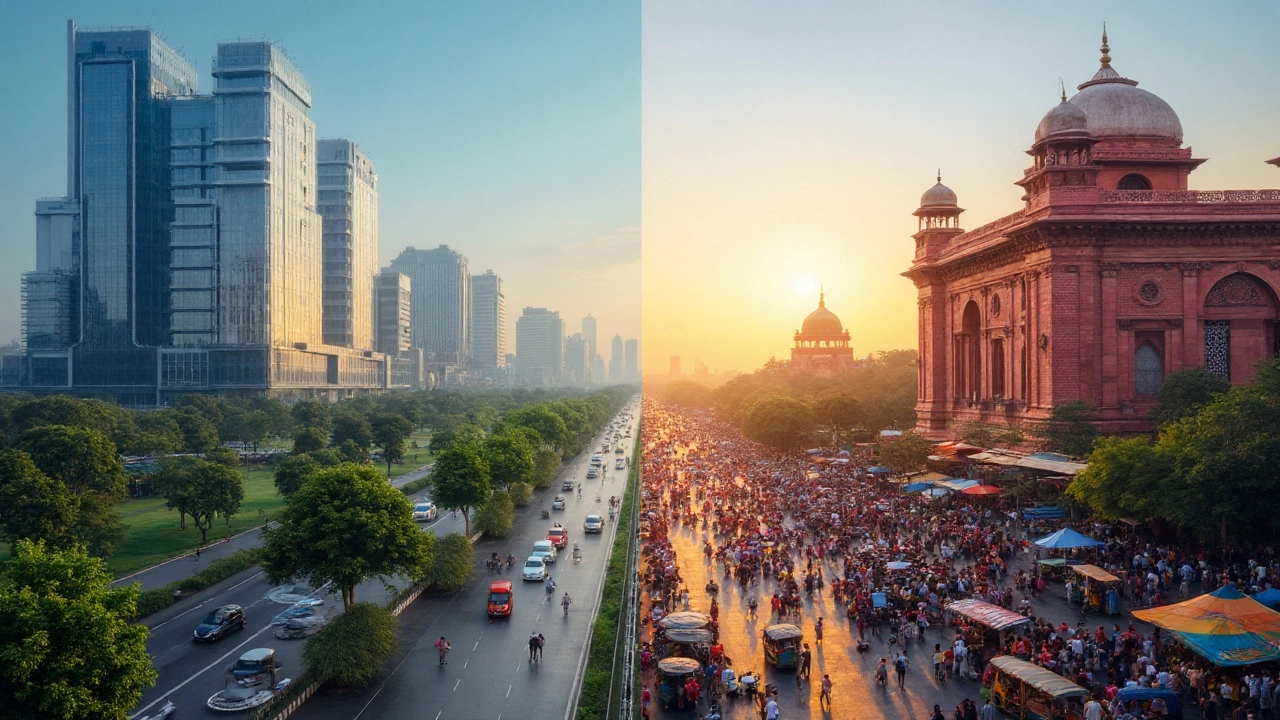
Explore a data‑backed look at whether South India is richer than North India, comparing GDP, per‑capita income, HDI, FDI, literacy and more.
When analyzing North India economy, the combined economic activity of states like Uttar Pradesh, Punjab, Haryana, Himachal Pradesh, and Delhi, driven by agriculture, industry, services, and trade. Also known as Northern Indian economic region, it plays a pivotal role in India’s overall GDP, accounting for roughly 30% of national output. Understanding its structure helps readers see why policies, investments, and market shifts matter here.
The agriculture sector, a backbone of North India, produces wheat, rice, sugarcane, and dairy that feed millions and generate about 15% of the region’s GDP. Small farms dominate, but high‑yield varieties and better irrigation are raising productivity. Meanwhile, the tourism industry, leveraging heritage sites, hill stations, and spiritual pilgrimages, contributes roughly 8% of regional output and creates thousands of jobs. Destinations like Varanasi, Amritsar, and the Himalayas attract both domestic and foreign visitors, linking cultural wealth to economic gain.
Industrial activity centers on the manufacturing sector, especially textiles, automotive parts, and pharmaceuticals, which together add close to 12% to the North India economy. Cities such as Ludhiana and Gurgaon host large clusters that feed export markets and drive urban employment. The rise of small‑scale units and the adoption of automation are reshaping output quality and labor needs.
Infrastructure development acts as the catalyst that ties all these sectors together. Investments in highways, rail corridors, and renewable energy projects improve market access, lower logistics costs, and attract foreign capital. For example, the Delhi‑Meerut Expressway has cut travel time by 40%, boosting trade flows for nearby towns. Robust power supply and digital connectivity are also essential for both manufacturers and service providers.
Policy frameworks, such as the National Urban Transport Policy and state‑level farm subsidies, directly influence growth trajectories. Recent reforms encouraging private participation in logistics and easing land acquisition rules aim to unlock further potential. However, challenges like water scarcity, seasonal unemployment, and regional disparities require targeted solutions.
Our article collection below mirrors these themes. You’ll find pieces on heritage site density in Madhya Pradesh, safety tips for traveling across India, cost guides for tourists, and deep dives into specific sectors like tourism and manufacturing. Together, they paint a comprehensive picture of how the North India economy intertwines with culture, travel, and investment.
Ready to explore the detailed posts? Scroll down to discover data‑rich guides, practical tips, and real‑world examples that bring the North India economy to life.

Explore a data‑backed look at whether South India is richer than North India, comparing GDP, per‑capita income, HDI, FDI, literacy and more.